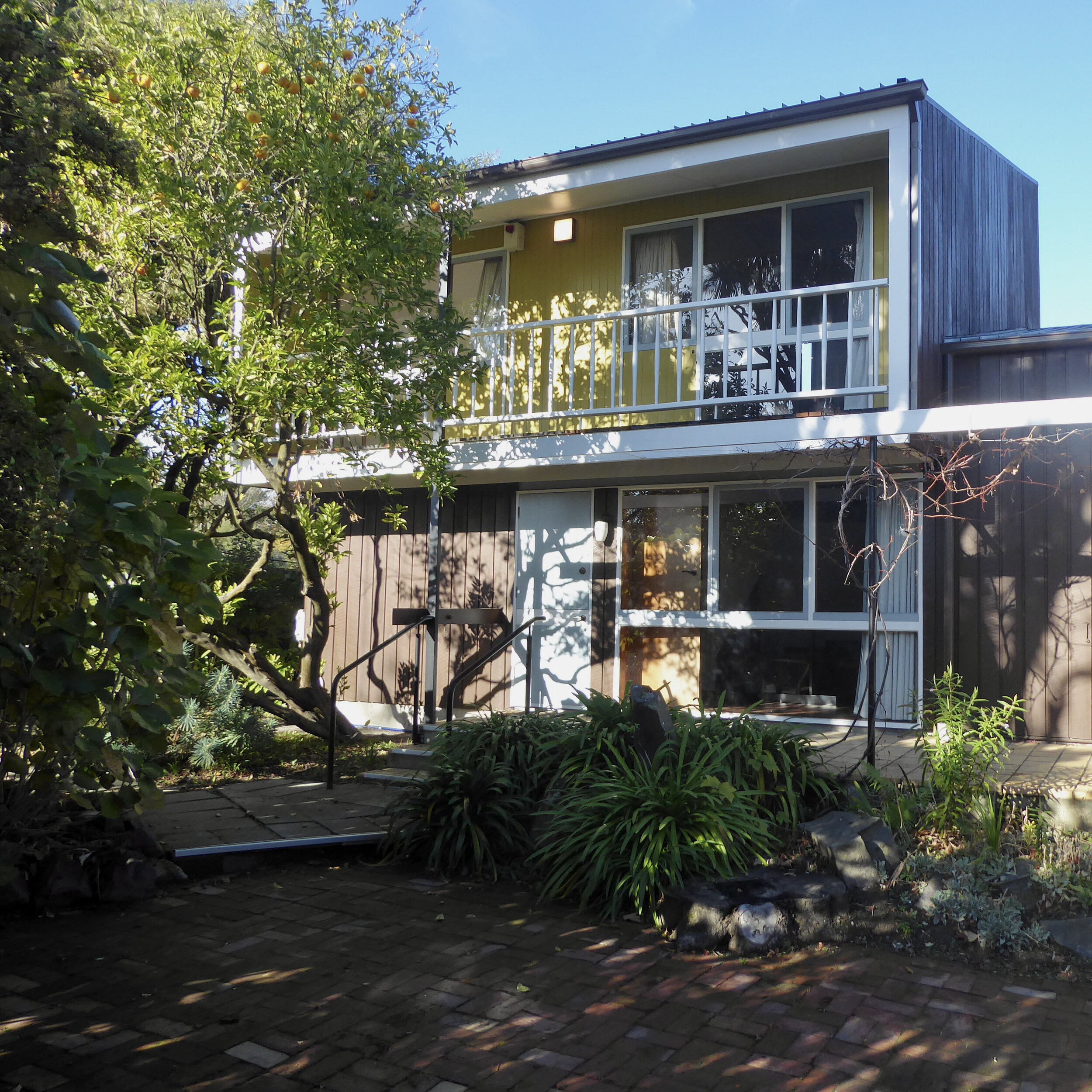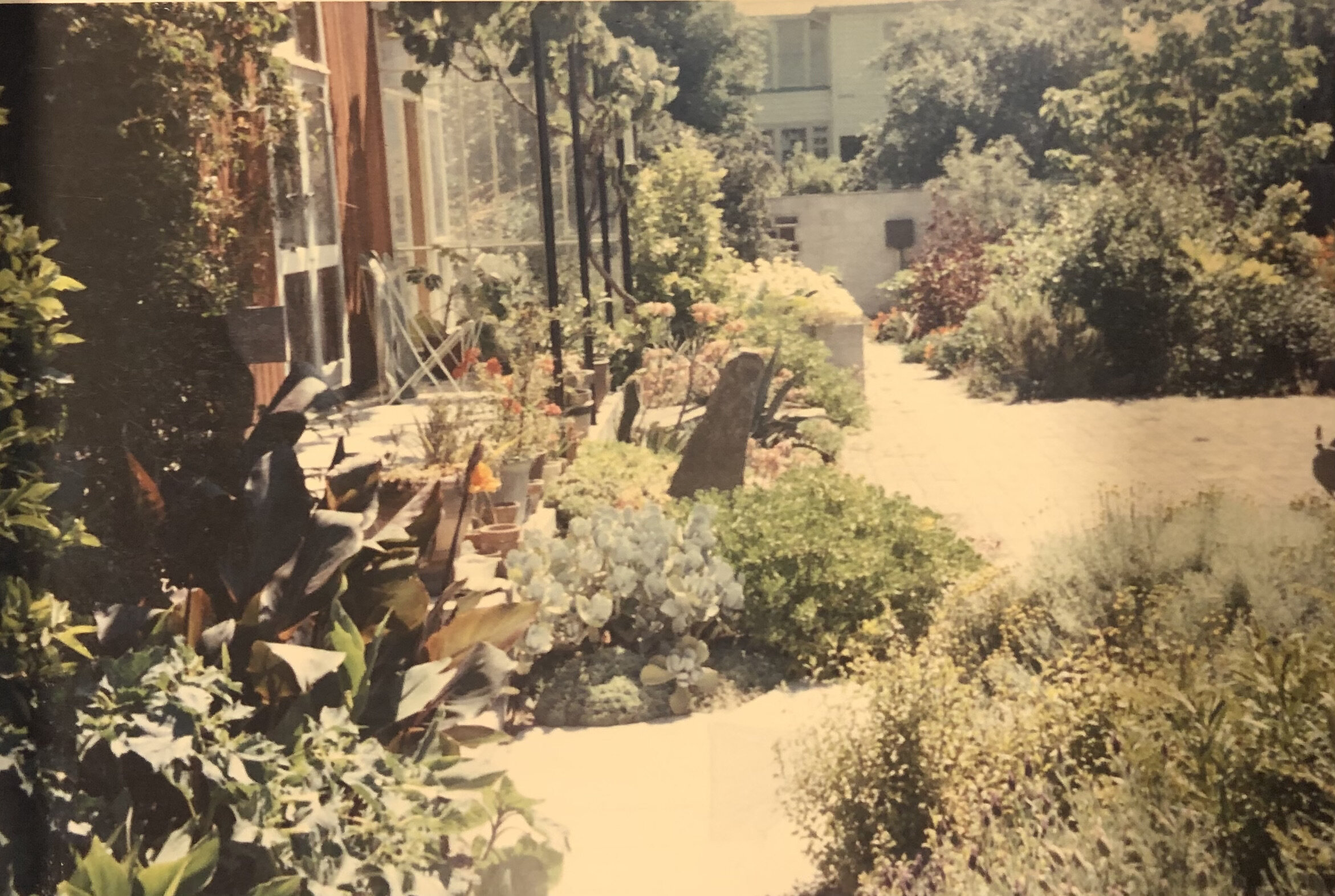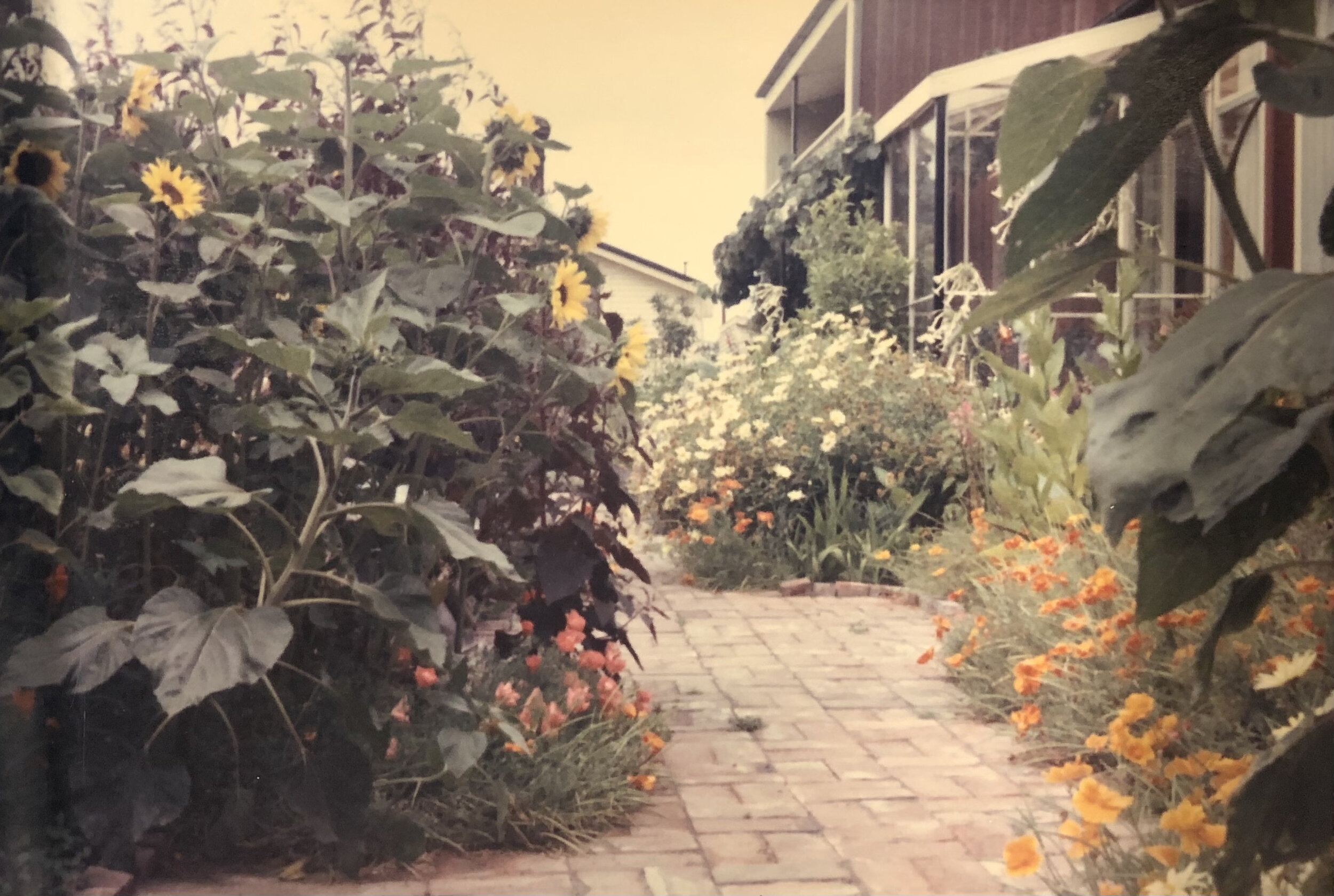Preserving landscape artist Bill Sutton's garden
Nature knows best, is the philosophy that artist Bill Sutton lived by. And it’s reflected in the garden of his old Christchurch home, according to Dr Wendy Hoddinott who’s been writing a landscape conservation plan for the property.
“Artists often do have a connection to their garden and you can see Bill’s personality come to life in his,” she said. “He was very fond of trees and plants and designed and planted the garden himself. He had lots of natives and a love of contrasting textures, shapes, leaf forms and colour.”
Bill Sutton standing alongside his patio which featured succulents set among rocks as sculptural features, 1970s. Photo courtesy of Christchurch Art Gallery Te Puna o Waiwhetū
Nationally recognised for his landscape and portrait artworks, Sutton painted nearly all of his work at his Templar Street home, which was designed for him by his colleague and friend Tom Taylor. He lived there from 1963 until his death in 2000. Damaged in the Canterbury earthquakes the red-zone property was due to be demolished before a successful campaign was launched to save it.
It’s understood Land Information New Zealand paid the $250,000-plus to restore and repair it before handing it over to the Christchurch City Council, which has leased it to the Sutton Heritage House and Garden Trust. It now hosts an artist-in-residence programme.
Dr Hoddinott was called in by the council to write the conservation plan for the garden and setting so the entire property can be protected in the Christchurch District Plan.
The garden layout has changed little since its early development. View from the main entrance, 2021. Photo courtesy of Christchurch City Council.
She says in developing a conservation plan for any landscape there are similar challenges. “The heritage values of a garden can be quite subtle, not very tangible,” Dr Hoddinott says. “You are identifying things people can’t necessarily see but they are integral to the authenticity of that garden.
“Gardens aren’t like architecture, they’re constantly changing. So when assessing what’s significant you’re thinking about how you retain this into the future, whether you can retain it and whether that’s even appropriate as the garden evolves. So there are quite a complex system of values to consider before writing policy to protect and manage those features into the future.”
Sutton House and the patio rock garden, 2021. Photo courtesy of Christchurch City Council.
Sutton’s place stands out in the Richmond suburb as an example of a modern house for its time. “It was an unusual design to have been built in that neighbourhood in the sixties because it was dominated by timber villas and bungalows. So it was very much your ornamental garden out the front and your vegetable garden out the back.
“Whereas the modern garden was more about an integration of the garden and the house - a space for living rather than a place to look at.”
The fact that Sutton wasn’t fond of the set suburban showpiece shows in his naturalistic design preferences, and for the design of his house and garden as a continuation of each other, Dr Hoddinott says. He chose an eclectic mix of species, with natives forming the bones of his design. Mixed in were drifts of flowers and a rock garden with succulents. There are many fruit trees and a large fig tree which Sutton left to grow into its own shape, creating a sculptural quality.
The wild, sculptural quality of the fig tree, planted when Sutton first built the house in 1963. Photo courtesy of Christchurch City Council.
“His garden was very much about experimentation. He liked to let things seed and where they landed was where they were meant to be. He loved natives and planted karaka, cabbage trees, lancewood, kōwhai, hebes and many plants of contrasting size and colour.
“You start to see his personality come to life in the landscape and his personal association with the place. His design philosophy and use of space are things that aren’t quite so tangible in terms of protecting the place into the future but they’re integral to the authenticity of the garden and house together in that setting.”
All of these plants could be easily seen from his studio because the house was designed with large windows opening out onto the area.
During her research for the project Dr Hoddinott discovered that Sutton’s trip to England in the 1940s had transformed his approach to painting. He came from a tradition where art was to be looked at rather than experienced, and his exposure to the post-Impressionists caused him to look at the landscape differently. Before this, he hadn’t realised it was possible to paint beyond appearances, and on return to New Zealand said he saw our country for the first time. It was all about how to express the landscape as more than scenery - an experience that could engage the senses as well. “It appeared to me that this was what he was doing in his garden too.”
View towards Templar Street across the patio and brick courtyard, 1966. Photo: Box 31.
“There’s a concrete block wall along the Templar St boundary and some of the blocks are turned sideways so that before you enter the garden you get a glimpse of it. As you enter through the gate, either side of you the garden was designed to be full of perennials, drifts of contrasting plants and really lush - it guides your experience into a courtyard that opens out in front of the house. So it’s those kinds of views and experiences that I’ve recommended should be preserved and maintained because they’re part of the original intent of the design.”
Dr Hoddinott believes there are many New Zealand gardens and public spaces worthy of conservation because of what they tell us about our history, our people and the way landscapes have been used.
She’s been working in this area of practice since 2009. “The research feels a bit like time travel to me,” she laughs. “I love really getting to understand what a place was like in the past, what the intent of the designer was and in the case of a garden, who the person is behind the design of that place.”
Sutton’s garden contained drifts of flowers with contrasting textures, leaf forms and colours, 1969. Photo: Robert and Barbara Stewart Library and Archive
She’s currently working with WSP conservation architects on a conservation plan for Cathedral Square and says we often think about buildings but forget that the spaces between them are just as important. Many people neglect the meaning and structure of open spaces which are in danger of disappearing because of development pressures to rebuild the city.
“We can lose what was essential to the original form of the city, and our connection to our past and its people.
“Like Bill Sutton’s garden. If we didn’t have his garden, we could lose some of what Bill offered the world. He’s contributed so much through his art. His garden gives us valuable insights into his way of life as an artist and the way he saw the world through it.”





